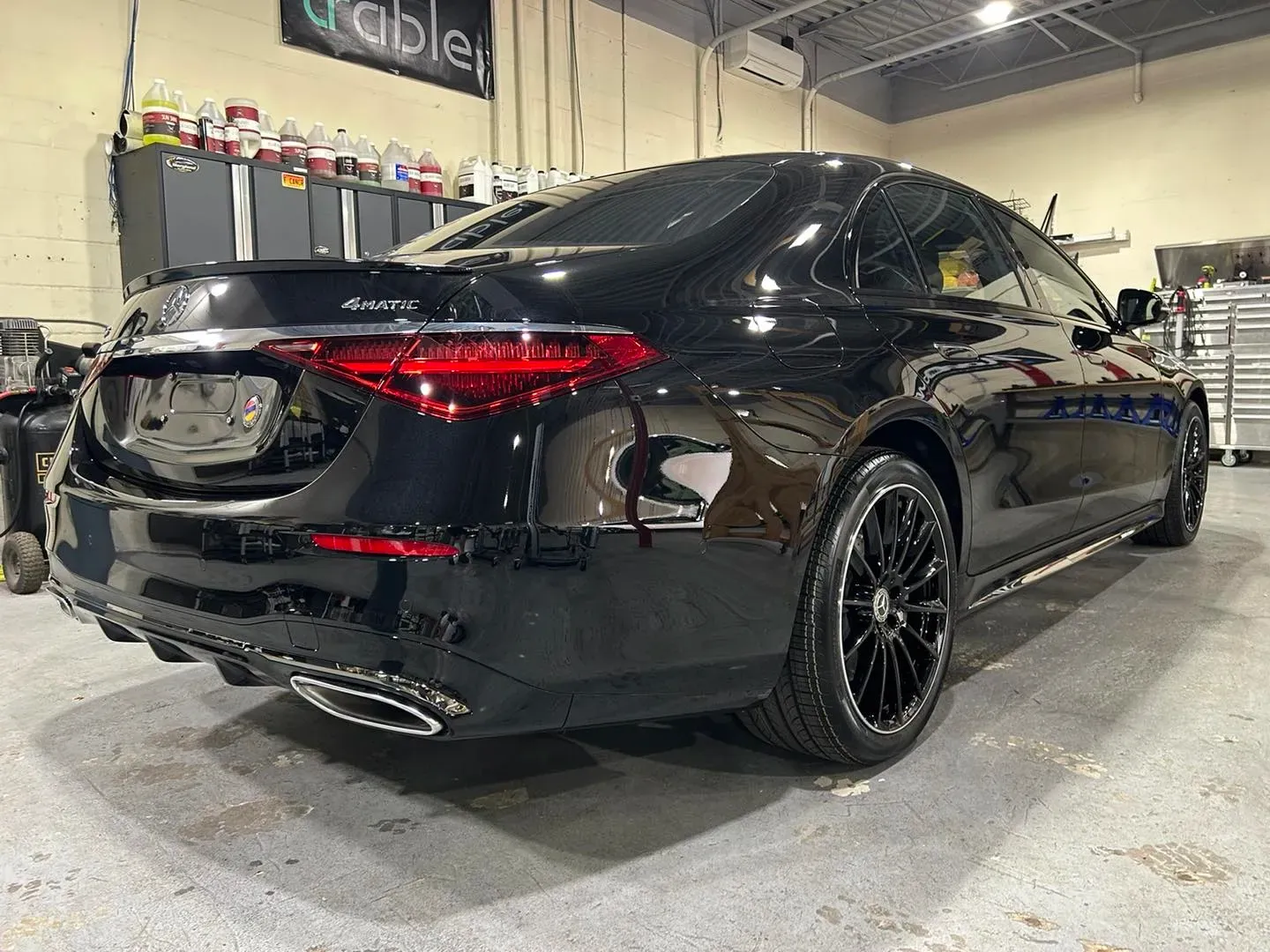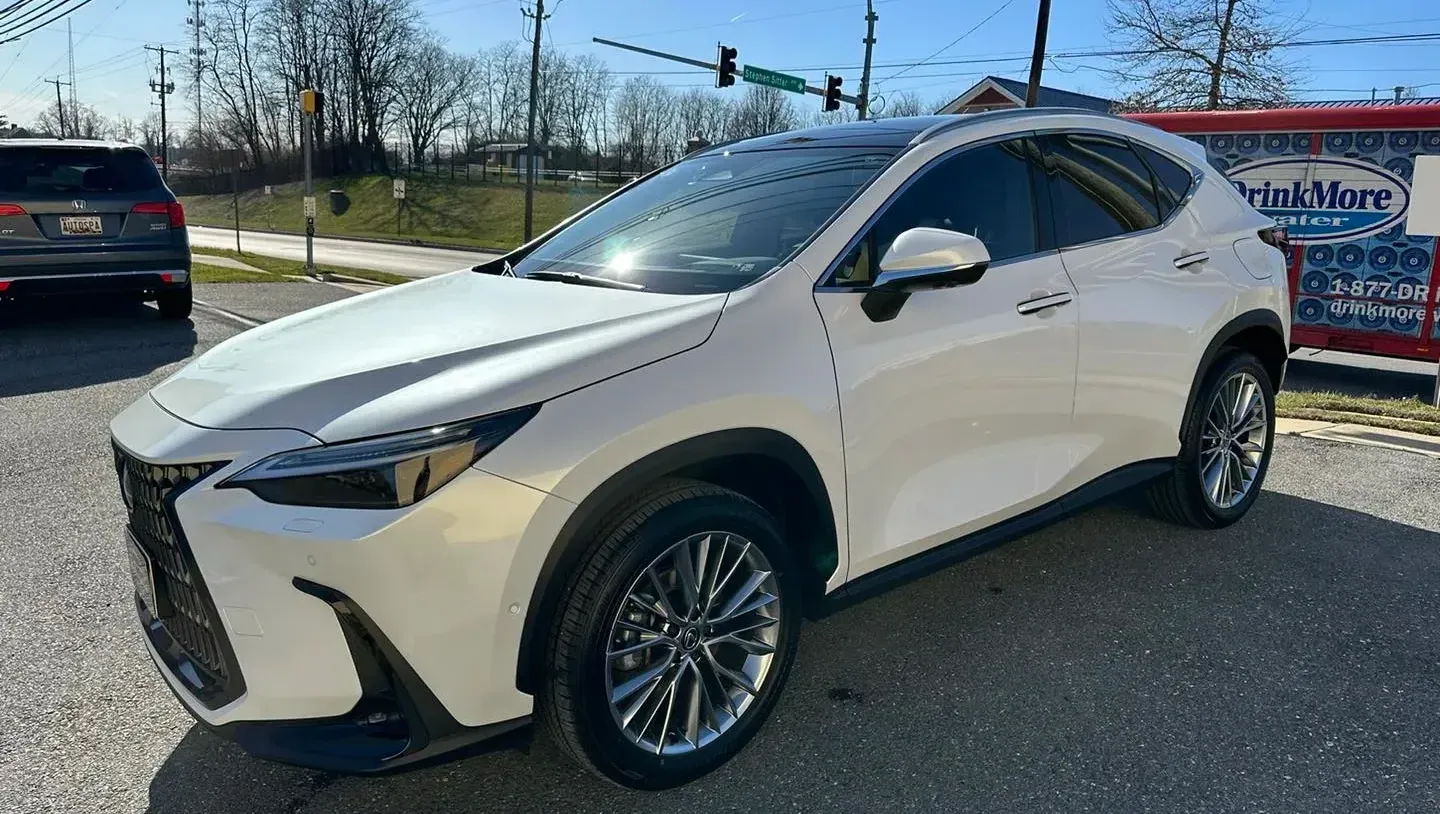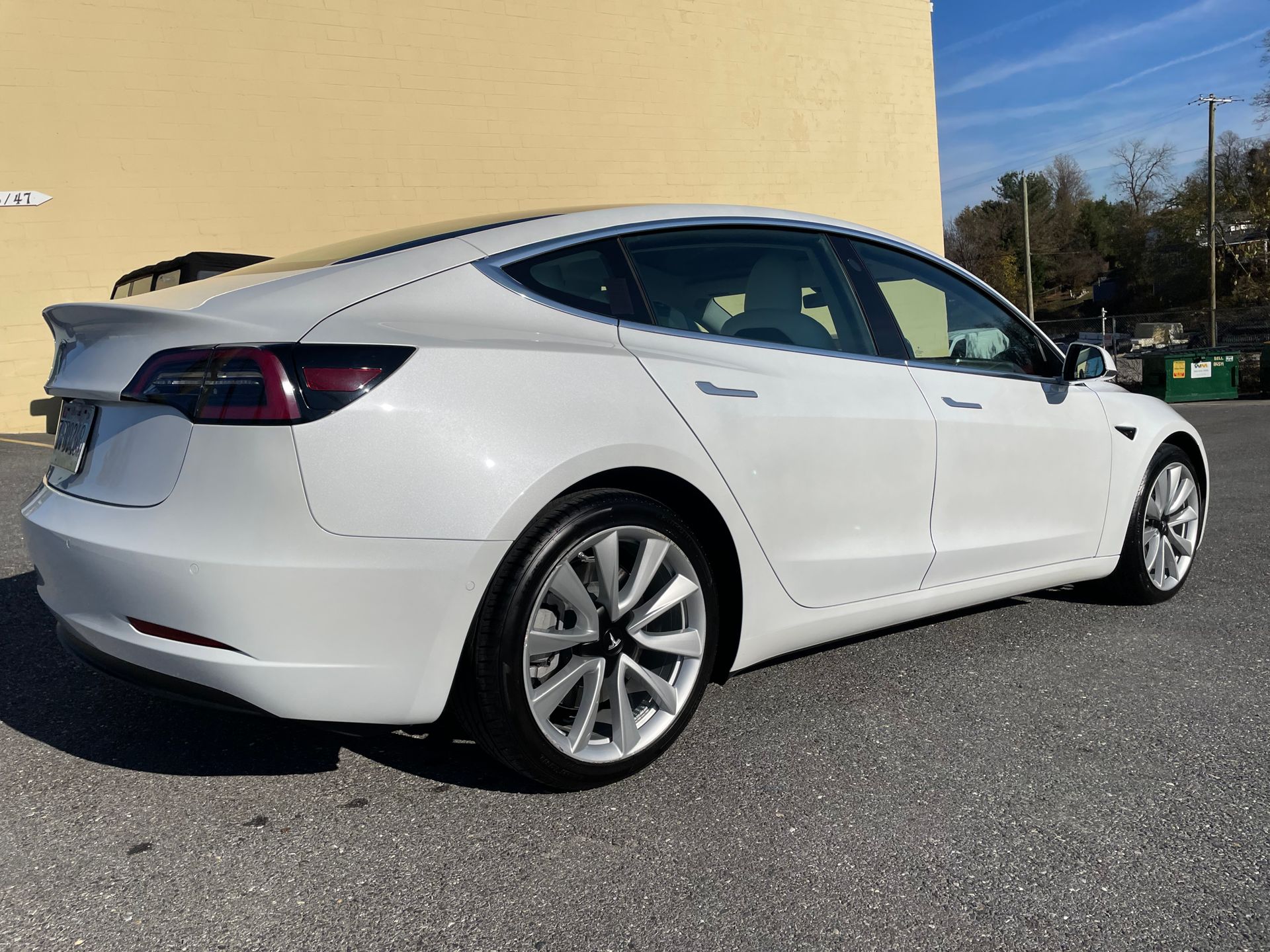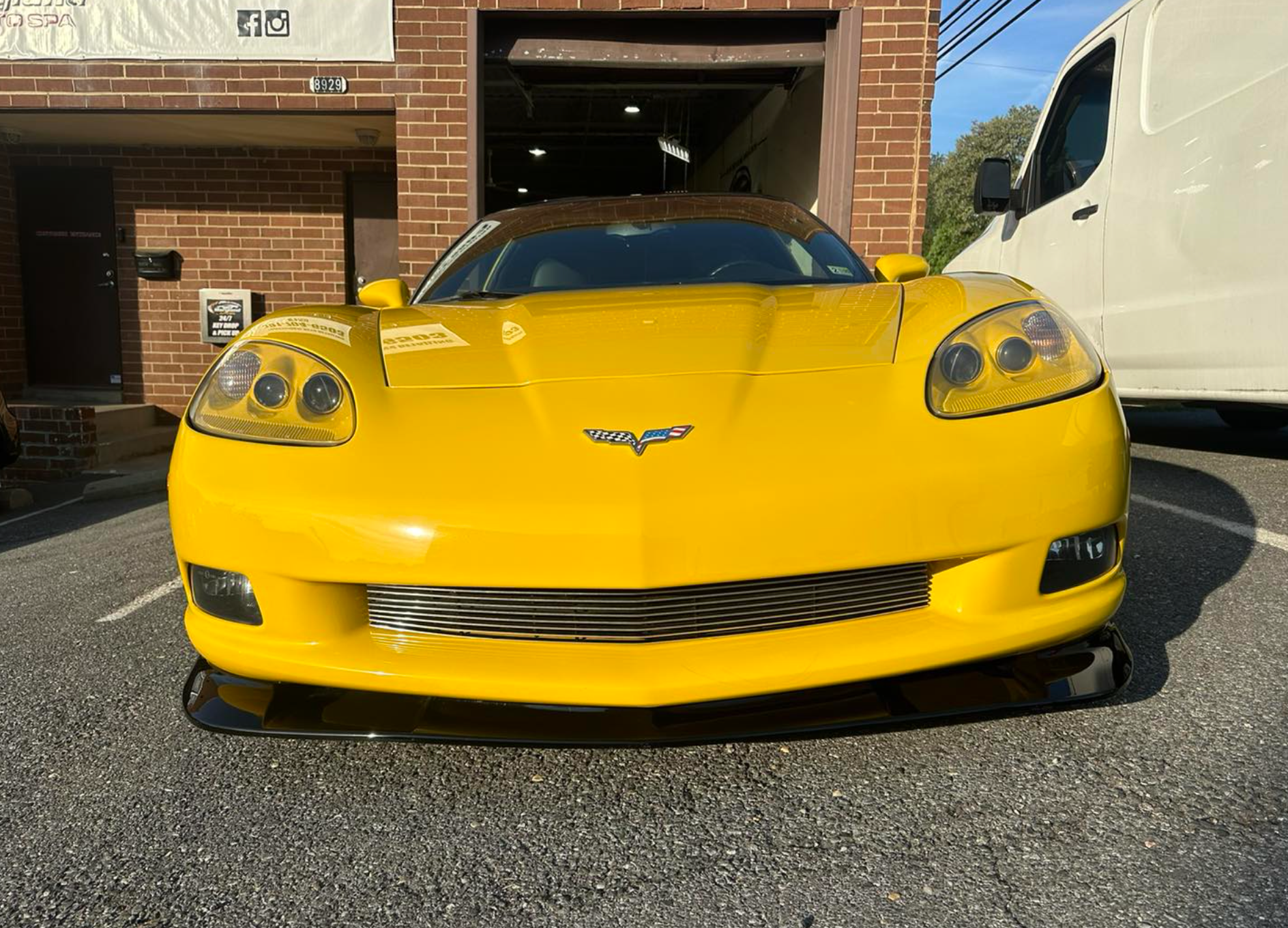The Science Behind Superhydrophobicity: How Ceramic Coating Repels Water
SCHEDULE ONLINE GET A FREE ESTIMATESuperhydrophobicity packs a punch. It's a fancy term for a powerful water-repelling tool that auto detailers love. With special coatings, this treatment makes surfaces shoo off water like ants at a picnic, keeping your car cleaner for a much longer period of time. It might sound like rocket science, but remember this - superhydrophobic ceramic coatings are like super suits for cars. They bond with the car's surface at an almost invisible level, making a solid shield against dirt and damage while effortlessly sending water rolling away. Let’s learn more about the science behind the superhydrophobic properties of ceramic coating!
Defining Superhydrophobicity
Superhydrophobic coatings are akin to having a force field against liquids. When a surface possesses superhydrophobic properties, it repels water so effectively that droplets practically bounce off it. Rather than clinging or spreading out, the droplets form into tiny beads that roll right off, creating an invisible barrier between the surface and any kind of liquid - be it water, oil, or any other common fluid.
The science behind this phenomenon lies in the nanostructures on the coating's surface, creating small pockets of air that prevent water adhesion. The chemical composition and physical structure both play a crucial role. It's reminiscent of miniature spikes or hills at such a microscale that there's ample space between each tip for water (or any liquid) to barely touch the actual "hill," let alone run down it.
This effect is similar to an intricate maze that water fails to navigate, confounding water at every turn and introducing self-cleaning characteristics to surfaces coated with superhydrophobic compounds.
Furthermore, as these surfaces repel water and contaminants, maintaining a clean car becomes less labor-intensive and less frequent than dealing with grime on traditional paint finishes.

Superhydrophobic Coatings: The Significance of Ceramic Coatings
When it comes to superhydrophobic coatings, ceramic coatings play a crucial role due to their unique properties. Ceramics form an incredibly tough and durable layer that bonds with the surface at a molecular level, providing exceptional resistance to environmental damage.
This bonding process is key to creating a long-lasting and effective hydrophobic effect. By forming a protective shield, ceramic nanoparticles ensure that the surface is resistant to damage from UV rays, chemicals, and physical wear and tear. This durability is what makes ceramic coatings stand out as a superior option for achieving long-term water repellence.
While many different materials can be used to create protective coatings, the unique chemistry and structure of ceramics make them particularly adept at providing this level of resilience. The interlocking nature of ceramic particles results in a hard, tightly-knit structure on the surface.
What's truly fascinating is that this protective shield formed by ceramics not only provides resistance against water but also contributes significantly to minimizing dirt buildup and protecting against common pollutants. As a result, it maintains the aesthetic appeal of surfaces for an extended period of time.
This emphasis on resilience cements ceramics as an indispensable component in the creation of superhydrophobic coatings, ensuring that these coatings provide long-lasting protection against environmental wear and tear.
Key Properties of Superhydrophobic Ceramic Coatings
Superhydrophobic ceramic coatings boast remarkable properties that make them a game-changer in the field of automotive care. Let's break down these key properties to understand why they're so impressive:
Water Beading
The water beading effect is one of the most visually striking aspects of superhydrophobic ceramic coatings. When applied to the surface of a car, these coatings promote water beading, causing water to form nearly spherical droplets that easily slide off the surface. As they roll off, they carry dirt and contaminants with them, essentially providing a self-washing mechanism for your vehicle.
This means less water pooling, fewer water spots, and easier post-wash drying due to decreased wetness retention.
Self-Cleaning Effect
The self-cleaning effect facilitated by superhydrophobic ceramic coatings is revolutionary. This property reduces the adhesion of dirt and grime to the surface, making it significantly easier to wash your car. Furthermore, it helps keep your vehicle cleaner for longer durations between washes.
Wouldn't it be nice if every drive in the rain automatically cleaned your car? That's what this self-cleaning action delivers!
Enhanced Gloss and Protection
In addition to their water-repelling and self-cleaning properties, superhydrophobic ceramic coatings significantly enhance the gloss of a vehicle's paint. The increased reflective quality gives incredible depth and shine to the paintwork, setting it apart from a regular finish. Moreover, these coatings serve as protective barriers against environmental damage such as UV rays, acid rain, and oxidation.
With added gloss and protection like this, it's no wonder that more and more car enthusiasts are turning to superhydrophobic ceramic coatings for their vehicles.
Interaction of Water With Superhydrophobic Coatings
In the remarkable event where water meets a superhydrophobic coated surface, magic unfolds. Rather than spreading out thinly, the water forms tiny beads that rest atop the coating, as if it refuses to touch it. This phenomenon is due to the microscopic structure of the coating, earning it the "superhydrophobic" title.
Visualize this: spilling water on wax paper creates a wet spot. Imagine the same spill on a freshly waxed car—water doesn’t spread or linger, thanks to superhydrophobic coatings that minimize contact between water and your car’s surface. Instead of clinging on like a child hugging their favorite toy, the water beads up and effortlessly slides off, just like butter off a hot pan.
Let's examine why this happens: When water meets a superhydrophobic surface, the microscale and nanoscale roughness formed by the coating repel water molecules, making them stick together and resist spreading out.
The beads gracefully slide off, gathering dust, dirt, and contaminants as they go—a self-cleaning process that maintains your vehicle’s appearance. As raindrops elegantly fall during a light shower, they leave minimal traces behind after rolling off the surface, along with any accumulated dust or particles.
Imagine how much easier cleaning your car becomes when most contaminants slough off effortlessly. Furthermore, your car experiences less wear and tear over time because dirt and grime don't sit directly on it.

Progress in Superhydrophobic Coatings Research
As the demand for superhydrophobic coatings grows, there's an increasing emphasis on making them more durable and long-lasting. Researchers are continually working to optimize scratch resistance and longevity, focusing on enhancing the hydrophobic effect. Advances in nanotechnology play a pivotal role in creating more robust formulations that offer superior protection against abrasion and chemical degradation.
When it comes to durability, the challenge lies in maintaining the superhydrophobic characteristics of the coating under various conditions, be it exposure to harsh weather elements or regular wear and tear. Researchers are exploring ways to fortify the coating's structure at a molecular level, ensuring that it can withstand physical forces without losing its water-repellent properties.
For instance, recent developments have shown promise in introducing self-healing mechanisms into coatings. This means that tiny scratches or abrasions caused by dirt or dust could be rectified, preserving the integrity of the superhydrophobic surface over an extended period of time.
Enhancing scratch resistance is another key area of focus. Superhydrophobic coatings are prone to scratching, which can compromise their effectiveness over time. Nanotechnology innovations have led to tougher formulations capable of resisting scratching without compromising their effectiveness to repel water effectively.
The motivation behind these advancements is not just scientific curiosity but a practical drive to make superhydrophobic coatings more reliable and suitable for real-world ceramic coating applications. By enhancing their durability and resistance, these coatings can find applications in outdoor settings and high-traffic areas where traditional hydrophobic treatments may not stand up to environmental challenges.
While these research efforts may still be in their experimental stages, their potential impact on real-world usage is significant. It's through this dedication to progress that we inch closer to more robust and long-lasting superhydrophobic coatings, with enormous implications for industries ranging from automotive to consumer electronics and architecture.
Protection Offered By Superhydrophobic Ceramic Coatings
Superhydrophobic ceramic coatings are a game-changer for vehicle surfaces, offering exceptional protection against moisture, contaminants, and damaging environmental factors. These coatings have an innate ability to repel water, preventing it from adhering to the vehicle's surface. This not only safeguards the car from rust and corrosion but also maintains its appearance by keeping it cleaner and reducing the frequency of detailing. By forming a resilient barrier against external elements, including rain, snow, and mud, superhydrophobic ceramic coatings equip vehicles with a long-lasting defense unmatched by traditional detailing methods.
The concept is rather straightforward: think of a well-waxed car after a rainfall; water beads up and rolls off the surface effortlessly. However, what sets superhydrophobic ceramic coatings apart is that this water-repelling effect lasts for years instead of just a few weeks or months. Their ability to shield against hard water spots caused by rain and general wet-weather grime ensures that your vehicle stays pristine despite exposure to the elements.
Long-Term Benefits
These coatings contribute significantly to preserving the aesthetics and structural integrity of a vehicle's exterior. By effectively repelling water and environmental contaminants such as dirt and bird droppings, they minimize the accumulation of harmful substances that can erode the paint over time. Moreover, their protective qualities reduce the need for frequent detailing, saving both time and effort for vehicle owners.
With these long-term advantages of ceramic coatings in mind, it's no wonder that many car enthusiasts choose to invest in superhydrophobic ceramic coatings. Their superior protective properties extend beyond typical coloring and sealing processes to deliver unparalleled defense that enhances a vehicle's lifespan while maintaining its showroom-worthy appearance.
If you want to take advantage of these incredible benefits for your vehicle, visit
Maryland Auto Spa today and explore our top-tier ceramic coating services. You can enjoy peace of mind knowing your vehicle will be equipped with unparalleled defense against environmental elements.
Call us at (301) 704-6503 for more information on how we can help protect your investment!




